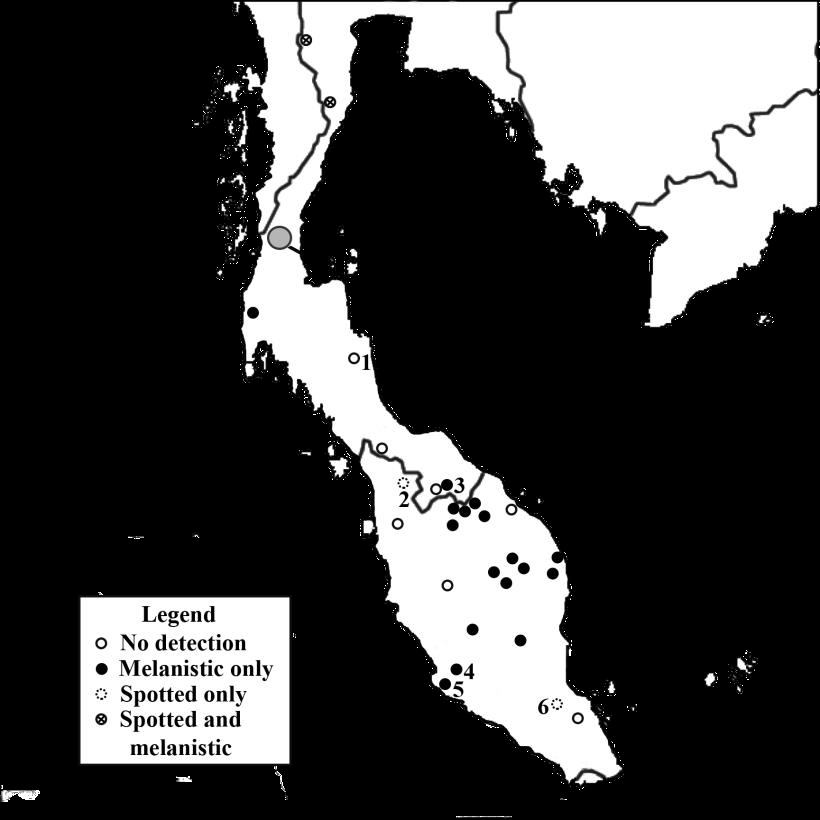- Previous research determined that only melanistic black leopards likely lived in the forested regions of Southeast Asia.
- The discovery of two spotted leopards may have shed some doubt on the previous hypothesis that the forested regions of Southeast Asia was the only place in the world where an entire population of animals is almost completely composed of the melanistic form.
- This new discovery points to the need for the conservation of the Ulu Muda Forest where these regionally rare spotted leopards were found, especially in light of the area’s escalating environmental pressures.
Leopards occur in two forms: spotted and black — the black-coated version being the result of the presence of the dark-colored pigment melanin, a condition known as melanism and the opposite of an albino condition.
Previous research determined that only melanistic black leopards likely lived in the forested regions of Southeast Asia — perhaps being the only place in the world where an entire population of animals is almost completely composed of the melanistic form.
However, a new study by a team of scientists working in the peninsular region of Malaysia has shed some doubt on this hypothesis with the discovery of two spotted leopards at the under-researched Ulu Muda forest site south of the Isthmus of Kra.

“This unexpected discovery deepens the mystery into the spatial dynamics of melanism in the region,” write the researchers in a newly published paper in Tropical Conservation Science, mongabay.com’s open-access journal.
“These findings are unexpected, because only two other studies have detected the spotted morph amongst many other melanistic leopards caught on camera traps in Peninsular Malaysia,” say the authors.

The new paper notes that until now spotted leopards have only been sighted in study areas north of the Isthmus of Kra — a narrow neck of land and zoogeographical boundary in southern Myanmar and Thailand. While a multiplicity of factors could be responsible for the spatial distribution of pigmentation in leopards, genetics and environmental conditions have been suggested as two of the probable causes in the segregation of the black and spotted forms.
“It is possible that the spotted morph might have been migrants from recently disturbed areas in the north, or that the melanistic phenotype never become entirely fixed,” the authors note. The discovery “also suggests that the degree of melanism might be an evolutionary response to different environments: the pigment genes can help the melanistic form to adapt better to their evergreen dipterocarp forest with closed canopies and low light levels, whereas the spotted ones may do better in open grassland.”

This new discovery points to the need for the conservation of the Ulu Muda Forest where these regionally rare spotted leopards were found — especially in light of the area’s escalating environmental pressures, including logging and wildlife poaching.
“There is a need for the loggers to better manage their logging regime spatially and sustainably, and for the curbing and monitoring of current poaching activities to minimize their impacts on the spotted leopard,” the paper concludes.
Citation
Tan, C. K. W., Moore, J., bin Saaban, S., Campos-Arceiz, A. and Macdonald, D. W. 2015. The discovery of two spotted leopards (Panthera pardus) in Peninsular Malaysia. Tropical Conservation Science Vol. 8 (3): 732-737.